What Tools are in Your Toolbox?
A common reason why individuals, families, and couples seek counseling is to “fix” a problem. Imagine if you only had one tool in your toolbox. Would that tool be effective?
A common reason why individuals, families, and couples seek counseling is to “fix” a problem. Imagine if you only had one tool in your toolbox. Would that tool be effective?
Mother’s Day is a celebration of mothers and motherhood. I recognize that Mother’s Day can bring mixed emotions to both children and mothers impacted by social distancing and other challenging circumstances related to trauma, grief and loss.
Adjusting to life after being diagnosed with T1D can be overwhelming as you are navigating through a new “normal”. Continue reading for some helpful tips to help you adjust to your life.

How can we get our kids to put down their phones when they see us on ours so often?
A 2016 survey by Common Sense Media, a nonprofit children’s advocacy and media ratings organization, asked almost 1,800 parents of children aged 8 to 18 about screen time and electronic media use by the parents. The average amount of time that parents spent with screen media of all kinds (computers, TVs, smartphones, e-readers) every day: 9 hours and 22 minutes. And on average, only an hour and 39 minutes of that was work-related; 7 hours and 43 minutes were personal.
Maybe that’s one reason you hear more and more often the recommendation that families delineate specific screen-free times and places in their lives. James P. Steyer, the chief executive of Common Sense Media, cited the idea of “sacred spaces” advocated by Sherry Turkle, a professor at the Massachusetts Institute of Technology and author of the 2015 book “Reclaiming Conversation: The Power of Talk in a Digital Age.”
It’s just as important to regulate our own use of devices and put them aside for screen-free periods as it is to ask our children to disconnect. And it certainly adds spice to family life if children understand that the same rules apply for all ages: that Dad will get grief for surreptitiously checking his phone under the dinner table and Mom has to park hers in the designated recharging zone for the night just as the children do.
Here are my own top five sacred spaces, but I’ll tell you frankly that they’re very much “aspirational” for me; I have a long way to go before I’m a good example.
1. In the Bed
Keeping TVs out of children’s bedrooms and bedtimes is an old pediatric recommendation from back in the day when TV was the screen we worried about most. Now we also stress keeping smartphones out of their beds, but many of us as adults also struggle with this imperative, which pretty much everyone agrees is critical for improved sleep and therefore improved health. Those of us with children out of the home, of course, tell ourselves that the phone has to come into the bedroom in case a child needs to call — but the phone can sleep on the other side of the room, not on the night stand.
If the family gathers around the dinner table, basic table manners dictate no digital participants. And yes, that means parents get in trouble if they lapse, and you don’t get to use the old let-me-just-Google-this-important-and-educational-fact strategy to settle family debates and questions of history, literature, or old movie trivia, because everyone knows what else you’ll do once you take out the phone.
I don’t read books well if I’m toggling back and forth to email. That’s O.K. for other kinds of reading, maybe, but not for books. If you made a New Year’s resolution to read more books or you’re going to try for family reading time, you can allow e-readers, but you might keep other screens at a distance.
It’s definitely worth picking some outdoor experiences that are going to be screen-free. One of the dangers of carrying our screens with us wherever we go is that wherever we go, the landscape is the same — it’s a conscious decision to go outside and see what there is to see, even if that means losing the chance to take a photo now and then. It may also work to put phones on airplane mode for travel and family activities, so they can be used only as cameras – or for maps or emergency calls if needed.
This is a tougher one for many families, since screens in the car can be so helpful on long rides, especially with siblings in proximity. But time in the car can also be remarkably intimate family time (yes, I know, not always in a good way). Some of the most unguarded conversations of the middle school and adolescent years take place when a parent is chauffeuring, so it’s probably worth trying for some designated screenless miles. I assume that I don’t have to say that the driver should not be looking at a screen — but the parent riding shotgun in the front also has to play by the rules.
Mr. Steyer said his organization’s survey showed that parents are paying attention to the ways that their children use screen media, and that they see it as their responsibility to monitor and regulate their children’s use of technology. In fact, two-thirds of the parents felt that such monitoring was more important than respecting their children’s privacy.
Parents’ role has to include awareness and also a willingness to “use media and technology together whenever you can,” Mr. Steyer said; “it’s good for parents to watch and play and listen with their kids and experience media and technology with them and ask them questions about what they see and hear.”
In a new policy on screen media use by school-age children and adolescents released last October, the American Academy of Pediatrics suggested that families develop and regularly update a family media use plan, using an online tool that takes into account the individual family’s patterns and goals and lets you designate screen-free times and places. That can be helpful for screen-loving children and for their screen-loving parents as well.
Kindness is one of the most important character traits, but sometimes kids need an extra reminder about the best ways to be kind to others or why kindness matters. These books provide that reminder in creative and appealing ways. Happy reading!
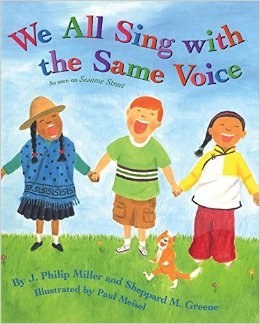
What It’s About: This is a song book that connects kids around the world. The verses highlight differences between kids, illustrated on the pages of the book. The chorus brings all of these kids with many differences together, singing “We all sing with the same voice. The same song. The same voice. We all sing with the same voice and we sing in harmony.”
Why It’s Important: Not only will the music engage kids as young as three, but it also encourages global awareness and connection at a young age. Everyone is different and unique, and this book celebrates those differences while singing together as friends.
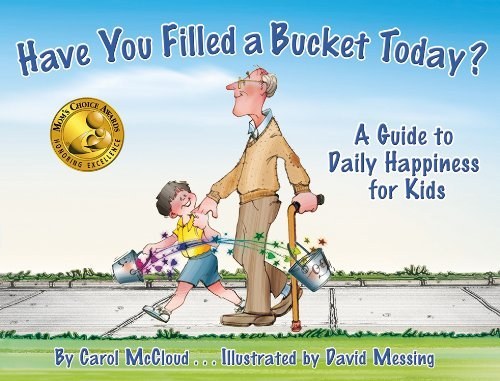
What It’s About: This book introduces an idea that everyone has an “invisible bucket.” These buckets are used to hold your good thoughts and feelings about yourself. When you do something kind, you help fill someone else’s bucket.
Why It’s Important: This provides kids with a visual representation of the importance of kindness. It focuses on social interactions and how our actions positively or negatively affect other people. This book would be especially beneficial as kids begin to develop empathy towards others.
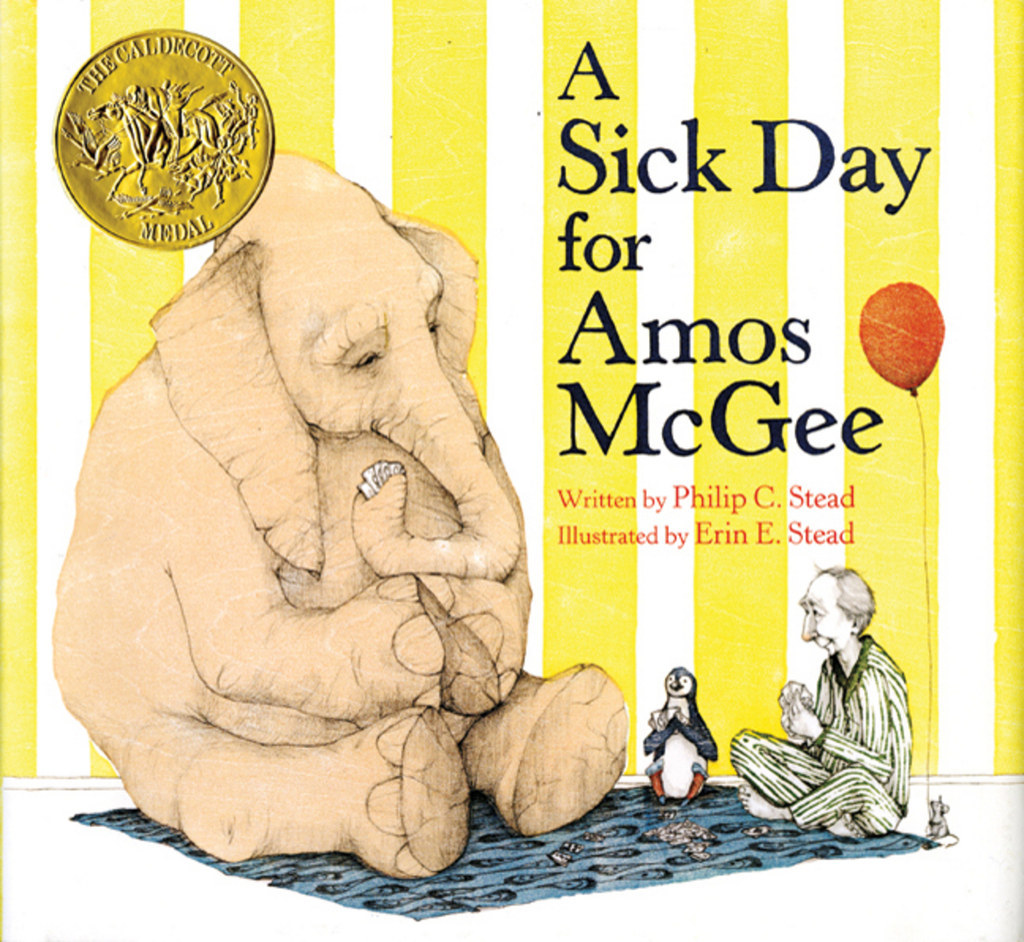
What It’s About: This story is about a zookeeper who is great friends with all of the animals and takes the time out of his day to do what they like with them. One day, he is too sick to go to work and the animals decide to come and visit him.
Why It’s Important: This sweet story shows how kind actions towards others are repaid. The animals all take care of Amos when he needs a friend, which shows children how important continual kindness towards others is.

What It’s About: This story is about a new girl at school, named Maya and how Chloe, who has gone to the school for a while, reacts when she arrives. Chloe is not welcoming towards Maya, and excludes her from the group games. Maya leaves and Chloe is left feeling full of regret.
Why It’s Important: This story does not have the happy ending that so many books do, but teaches a critical lesson. Every choice we makes affects others in either a positive or negative way, and we do not always have an opportunity to fix our negative actions.

What It’s About: This 2016 winner of the Newbery Medal follows a young boy, CJ, and his grandmother on their way home one day. CJ spends most of the journey asking “How come…?” questions about everyone and everything. His grandmother answers each question with patience and eventually they leave the bus to volunteer at a soup kitchen.
Why It’s Important: CJ is asking seemingly simple questions throughout the book, but his grandmother’s responses always elicit empathy towards the other characters throughout the book. It serves as a reminder that everyone we encounter has skills and a story, but we must be kind and open-hearted in order to hear it.
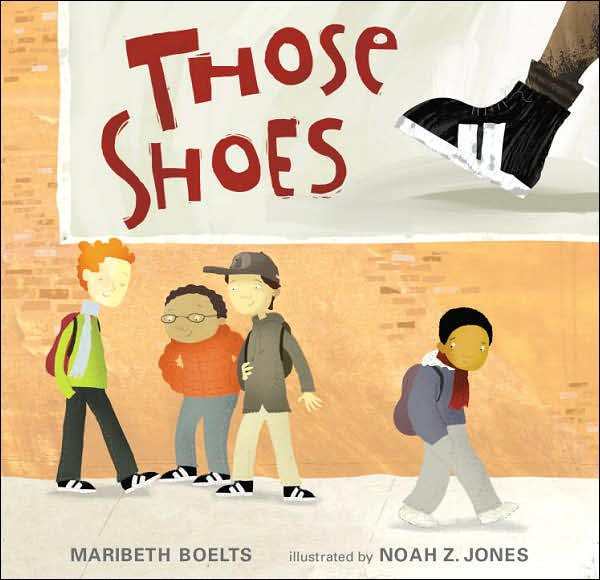
What It’s About: In this book, we see a young boy dreaming about getting a pair of really cool shoes. Unfortunately, his family does not have the money for this dream to become a reality. He eventually finds the shoes in a thrift shop in near perfect condition and buys them even though they are too tight. Another kid in his class can’t afford new shoes either, and his feet would fit in the cool shoes when the narrator’s would not. So, the narrator decides to give his shoes away.
Why It’s Important: This book highlights the importance of giving and making difficult decisions. We see the narrator struggle to decide if he can really give his shoes away, but when he decides to, both he and the boy who receive his shoes end up happier than they were before.
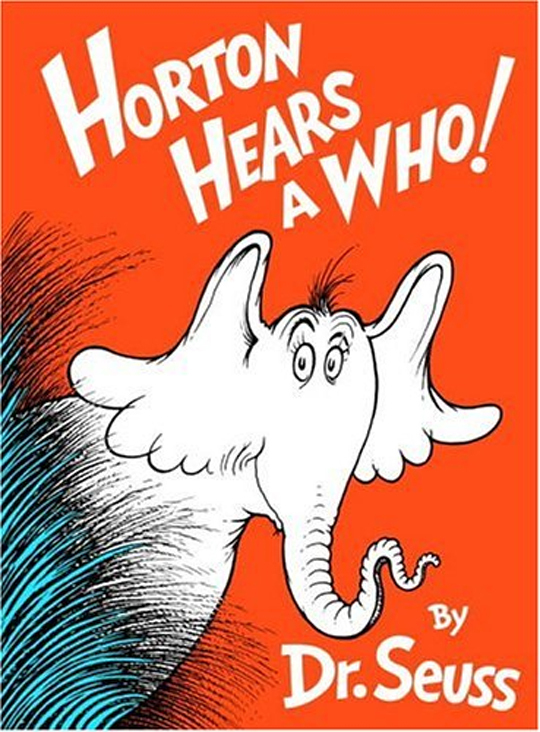
What It’s About: A classic Dr. Seuss, this book is about an elephant who discovers an entire community living on a speck of dust. With his big ears, Horton is the only animal in the jungle who is able to hear the Whos. Despite being made fun of by the other animals, Horton stands by Whoville because he knows it is the right thing to do.
Why It’s Important: Not only is Horton doing the right thing, he is doing the right thing while everyone around him is bullying him to give up. This teaches an important lesson about standing by what you believe in, no matter what you face. With older children, you can also use this book to discuss the importance of advocating for those who do not have a voice
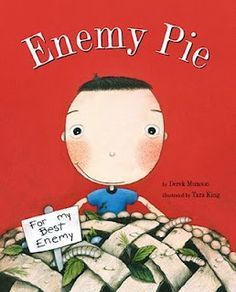
What It’s About: This is about a boy who is having a great summer until Jeremy Ross moves in down the street. Jeremy excludes people from birthday parties and laughs when they strike out in baseball. The narrator’s father makes enemy pie to help defeat Jeremy Ross. In order for enemy pie to work, the boys have to play together all day. By the end of the day they are good friends and enjoy the pie together.
Why It’s Important: This tells a classic story of judging a book by its cover, or making judgements about people based on insignificant details. After spending quality time together the two enemies learned that they actually got along quite well.
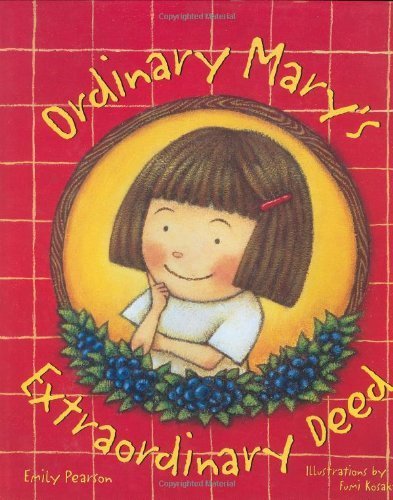
What It’s About: This story is about an average girl who decides to pick some blueberries for her neighbor. The neighbor bakes blueberry muffins and gives plates of them to five other people. This good deed turns into a chain strangers doing kind things for other strangers. Eventually, Mary has someone do something nice for her whose kind actions can be traced back to Mary’s blueberry picking.
Why It’s Important: This is another book that shows the important your actions can have on others, but it also shows the ways your actions can ripple out to affect total strangers.
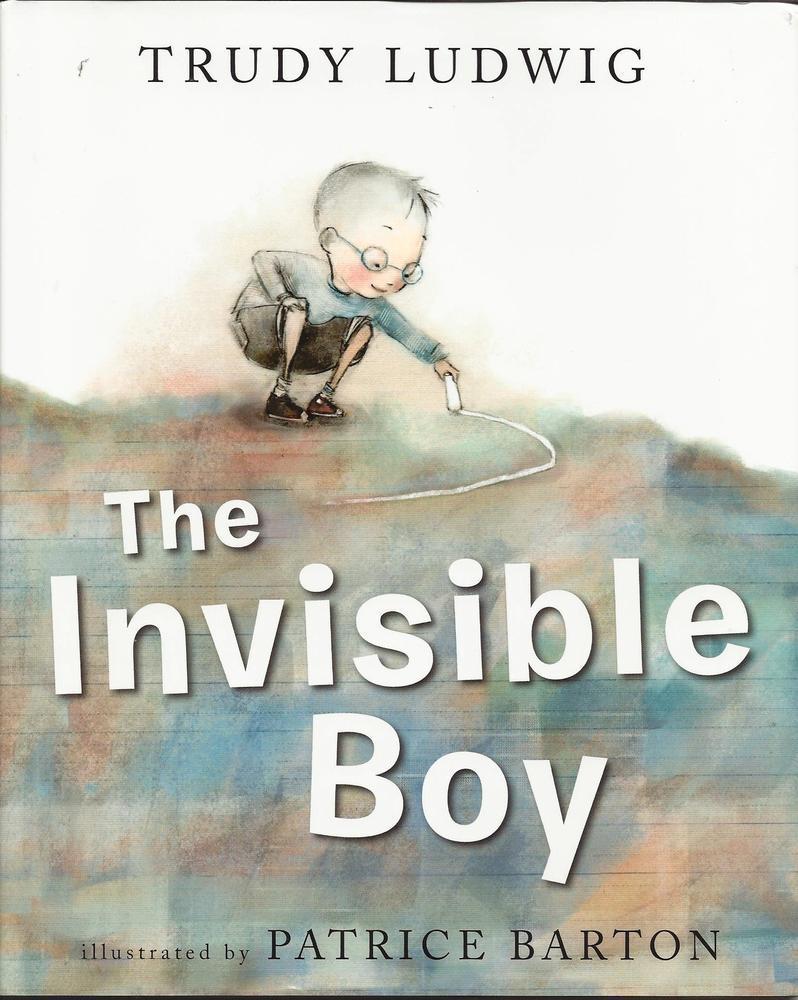
What It’s About: This sweet book tells the story of Brian, a quiet boy who never makes a fuss or much noise at all. He feels invisible compared to the other children who are the center of the teacher’s attention by being loud, or the children with lots of friends who get picked first for sports. When a new kid comes to school, he makes Brian feel a lot less invisible.
Why It’s Important: All kids are different. Some are outgoing and some are quiet. This book celebrates those differences while teaching the importance of welcoming all types of kids to play and participate.
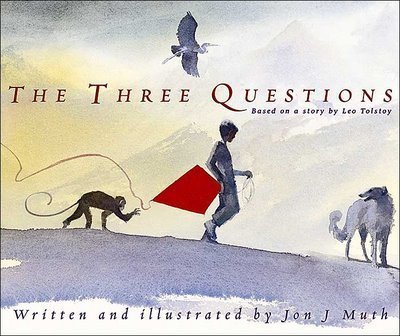
What It’s About: This book is about a boy named Nikolai who wants to be a good person, but is not always sure how. He wants to discover the answer to the three questions: When is the best time to do things? Who is the most important one? What is the right thing to do? His three animal friends help him answer these questions, but they all have slightly different approaches. He eventually learns that the right time is now, the important one is the one you are with, and the right thing to do is good.
Why It’s Important: This book takes a more conceptual approach to helping others, but would serve as an extremely useful tool for starting a discussion with older children about why kindness is an important character trait.
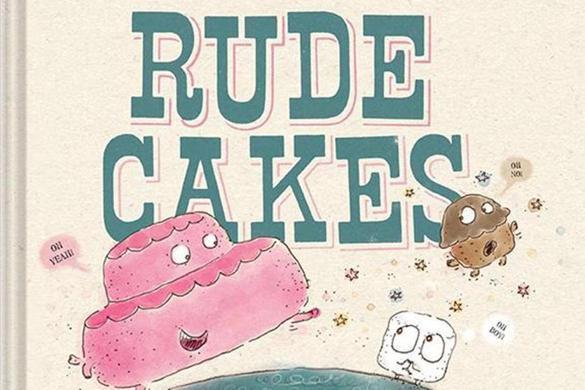
What It’s About: This book is about a cake, who is, very rude. He never says please or thank you, never listens, and doesn’t share well. One day a giant cyclops takes the rude cake and wears him as a hat. The cyclops has great manners, but the cake hates being a hat. After finally getting away from the cyclops, the cake becomes much more polite.
Why It’s Important: Although this book is quite out there, it teaches how far good manners and behavior can go toward getting what you want.

What It’s About: A familiar book to many, this book tells the heartfelt story of a boy and a tree who loved each other very much, but the boy ends up taking parts of the tree until the tree is worn down into a stump. At the end of the book, the boy (now an old man) just needs a place to sit, so he and the stump sit together.
Why It’s Important: This book shows the continual generosity and kindness of the tree, and how much the actions of the boy affected the tree. It can be used to teach children that kindness is important, but you should never give up so much that you suffer. You can also use it to teach give and take, the importance of a healthy and mutually beneficial relationship.
https://www.buzzfeed.com/emeynardie/13-childrens-books-that-encourage-kindness-toward-26paw?utm_term=.nkpjWjlBaY#.nabQNQVWbZ
The eager new mom offering her insouciant toddler an array of carefully-arranged healthy snacks from an ice cube tray?
That was me.
The always-on-top-of-her-child’s-play parent intervening during play dates at the first sign of discord?
That was me too.
We hold some basic truths as self-evident when it comes to good parenting. Our job is to keep our children safe, enable them to fulfill their potential and make sure they’re healthy and happy and thriving.
The parent I used to be and the parent I am now both have the same goal: to raise self-reliant, self-assured, successful children. But 12 years of parenting, over five years of living on and off in Japan, two years of research, investigative trips to Europe and Asia and dozens of interviews with psychologists, child development experts, sociologists, educators, administrators and parents in Japan, Korea, China, Finland, Germany, Sweden, France, Spain, Brazil and elsewhere have taught me that though parents around the world have the same goals, American parents like me (despite our very best intentions) have gotten it all backwards.
Why?
We need to let 3-year-olds climb trees and 5-year-olds use knives.
Imagine my surprise when I came across a kindergartener in the German forest whittling away on a stick with a penknife. His teacher, Wolfgang, lightheartedly dismissed my concern: “No one’s ever lost a finger!”
Similarly, Brittany, an American mom, was stunned when she moved her young family to Sweden and saw 3- and 4-year-olds with no adult supervision bicycling down the street, climbing the roofs of playhouses and scaling tall trees with no adult supervision. The first time she saw a 3-year-old high up in a tree at preschool, she started searching for the teacher to let her know. Then she saw another parent stop and chat with one of the little tree occupants, completely unfazed. It was clear that no one but Brittany was concerned.
“I think of myself as an open-minded parent,” she confided to me, “and yet here I was, wanting to tell a child to come down from a tree.”
Why it’s better: Ellen Hansen Sandseter, a Norwegian researcher at Queen Maud University in Norway, has found in her research that the relaxed approach to risk-taking and safety actually keeps our children safer by honing their judgment about what they’re capable of. Children are drawn to the things we parents fear: high places, water, wandering far away, dangerous sharp tools. Our instinct is to keep them safe by childproofing their lives. But “the most important safety protection you can give a child,” Sandseter explained when we talked, “is to let them take… risks.”
Consider the facts to back up her assertion: Sweden, where children are given this kind of ample freedom to explore (while at the same time benefitting from comprehensive laws that protect their rights and safety), has the lowest rates of child injury in the world.
Children can go hungry from time-to-time.
In Korea, eating is taught to children as a life skill and as in most cultures, children are taught it is important to wait out their hunger until it is time for the whole family to sit down together and eat. Koreans do not believe it’s healthy to graze or eat alone, and they don’t tend to excuse bad behavior (like I do) by blaming it on low blood sugar. Instead, children are taught that food is best enjoyed as a shared experience. All children eat the same things that adults do, just like they do in most countries in the world with robust food cultures. (Ever wonder why ethnic restaurants don’t have kids’ menus?). The result? Korean children are incredible eaters. They sit down to tables filled with vegetables of all sorts, broiled fish, meats, spicy pickled cabbage and healthy grains and soups at every meal.
Why it’s better: In stark contrast to our growing child overweight/obesity levels, South Koreans enjoy the lowest obesity rates in the developed world. A closely similar-by-body index country in the world is Japan, where parents have a similar approach to food.
Instead of keeping children satisfied, we need to fuel their feelings of frustration.
The French, as well as many others, believe that routinely giving your child a chance to feel frustration gives him a chance to practice the art of waiting and developing self-control. Gilles, a French father of two young boys, told me that frustrating kids is good for them because it teaches them the value of delaying gratification and not always expecting (or worse, demanding) that their needs be met right now.
Why it’s better: Studies show that children who exhibit self-control and the ability to delay gratification enjoy greater future success. Anecdotally, we know that children who don’t think they’re the center of the universe are a pleasure to be around. Alice Sedar, Ph.D., a former journalist for Le Figaro and a professor of French Culture at Northeastern University, agrees. “Living in a group is a skill,” she declares, and it’s one that the French assiduously cultivate in their kids.
Children should spend less time in school.
Children in Finland go outside to play frequently all day long. “How can you teach when the children are going outside every 45 minutes?” a recent American Fulbright grant recipient in Finland, who was astonished by how little time the Finns were spending in school, inquired curiously of a teacher at one of the schools she visited. The teacher in turn was astonished by the question. “I could not teach unless the children went outside every 45 minutes!”
The Finnish model of education includes a late start to academics (children do not begin any formal academics until they are 7 years old), frequent breaks for outdoor time, shorter school hours and more variety of classes than in the US. Equity, not high achievement, is the guiding principle of the Finnish education system.
While we in America preach the mantra of early intervention, shave time off recess to teach more formal academics and cut funding to non-academic subjects like art and music, Finnish educators emphasize that learning art, music, home economics and life skills is essential.
Why it’s better: American school children score in the middle of the heap on international measures of achievement, especially in science and mathematics. Finnish children, with their truncated time in school, frequently rank among the best in the world.
Thou shalt spoil thy baby.
Tomo, a 10-year-old boy in our neighborhood in Japan, was incredibly independent. He had walked to school on his own since he was 6 years old, just like all Japanese 6-year-olds do. He always took meticulous care of his belongings when he came to visit us, arranging his shoes just so when he took them off, and he taught my son how to ride the city bus. Tomo was so helpful and responsible that when he’d come over for dinner, he offered to run out to fetch ingredients I needed, helped make the salad and stir-fried noodles. Yet every night this competent, self-reliant child went home, took his bath and fell asleep next to his aunt, who was helping raise him.
In Japan, where co-sleeping with babies and kids is common, people are incredulous that there are countries where parents routinely put their newborns to sleep in a separate room. The Japanese respond to their babies immediately and hold them constantly.
While we think of this as spoiling, the Japanese think that when babies get their needs met and are loved unconditionally as infants, they more easily become independent and self-assured as they grow.
Why it’s better: Meret Keller, a professor at UC Irvine, agrees that there is an intriguing connection between co sleeping and independent behavior. “Many people throw the word “independence” around without thinking conceptually about what it actually means,” she explained.
We’re anxious for our babies to become independent and hurry them along, starting with independent sleep, but Keller’s research has found that co-sleeping children later became more independent and self-reliant than solitary sleepers, dressing themselves or working out problems with their playmates on their own.
Children need to feel obligated.
In America, as our kids become adolescents, we believe it’s time to start letting them go and giving them their freedom. We want to help them be out in the world more and we don’t want to burden them with family responsibilities. In China, parents do the opposite: the older children get, the more parents remind them of their obligations.
Eva Pomerantz of the University of Illinois at Urbana Champaign has found through multiple studies that in China, the cultural ideal of not letting adolescents go but of reminding them of their responsibility to the family and the expectation that their hard work in school is one way to pay back a little for all they have received, helps their motivation and their achievement.
Even more surprising: She’s found that the same holds for Western students here in the US: adolescents who feel responsible to their families tend to do better in school.
The lesson for us: if you want to help your adolescent do well in school make them feel obligated.
I parent differently than I used to. I’m still an American mom — we struggle with all-day snacking, and the kids could use more practice being patient. But 3-year-old Anna stands on a stool next to me in the kitchen using a knife to cut apples. I am not even in earshot when 6-year-old Mia scales as high in the beech in our yard as she feels comfortable. And I trust now that my boys (Daniel, 10, and Benjamin, 12) learn as much out of school as they do in the classroom.